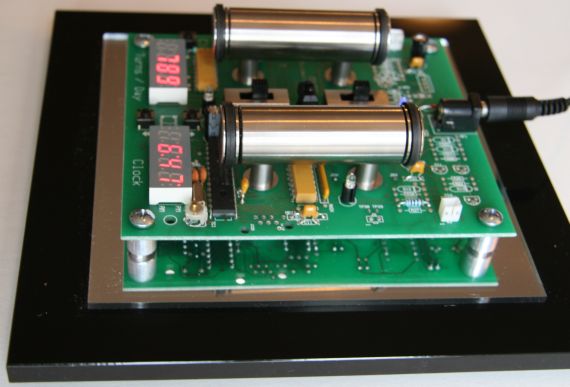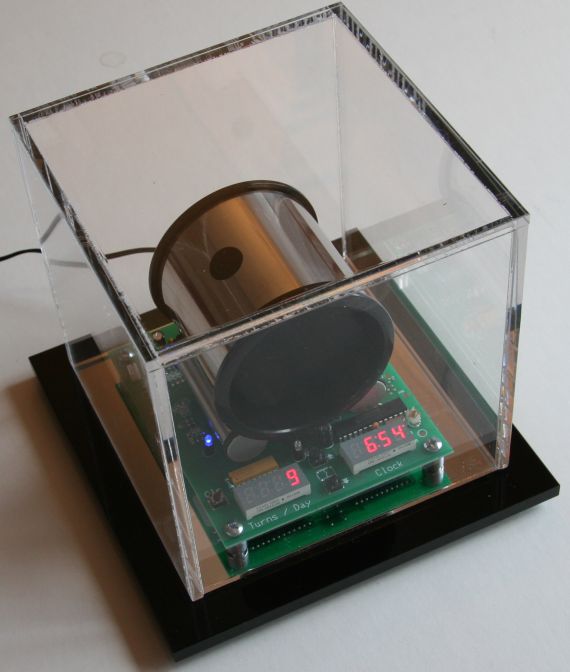
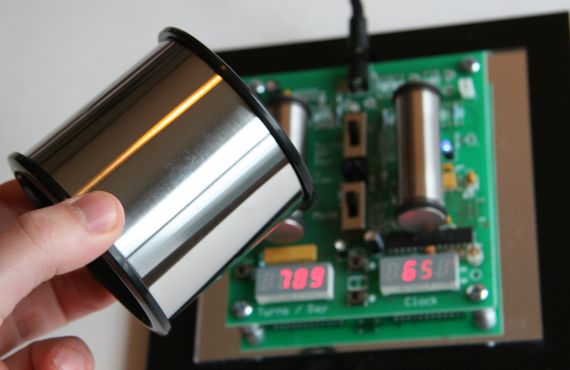
You are either gonna love or hate this watch winder – but if you are anything like me, you really like it. This is the Orbita Futura watch winder. There are actually several winders in the Orbita Futura line and this is sort of an interim version which you might not be able to find available. Still it is a good representation into the Futura watch winder line. Let me explain. The current entry level Futura winder is known as the Orbita Futura 1. It does not have the open circuit board and quite as many settings, but preserves the same cylinder on rollers winding style. The Futura 1 looks a bit different, but you can tell where it got its style – from this model I have reviewed. Like this model, the Futura 1 has an acrylic lid. The high end version of the Futura is actually called the Tourbillon 1. This is the version that looks most like this specific Futura. There are two main differences between this Futura and the Tourbillon 1. First is the use of crystal glass as opposed to acrylic for the enclosure. Crystal is going to be heavier, but gives you a sexier and higher quality look. The second difference is the “tourbillon” aspect of the name. Basically, the winder mimics the effect of a tourbillon escapement in such watches that have one. What it does it stop the winding cylinder in different positions each time. This allows potential differences in the rate of the watch in different positions to be averaged out and thus theoretically helps increase the rate results of a watch. The Tourbillon 1 winding cylinder has 13 different positions for the cylinder I believe. This future does not have this “tourbillon feature” with the watch starting and stopping its cycles in the same position. Now with that in mind, lets talk about this impressive little number. The Futura 1 retails for $695 and the Tourbillon 1 retails at $995. Prices from dealers are probably a little bit less.
The first thing you should know is that this watch winder is referred to as “programmable.” Unlike some other watch winders it has more than an “on” and “off” switch. Rather, you have an interesting range of settings and options that are functional or aesthetic related. Part of the character of this winder involves all the controls being on an exposed circuit board. The two backlit LCD screens, lights, and buttons are all on the board itself. They are labeled though, and the Futura comes with instructions (that actually sound as though they were written by a human being) that explain how everything works pretty well.
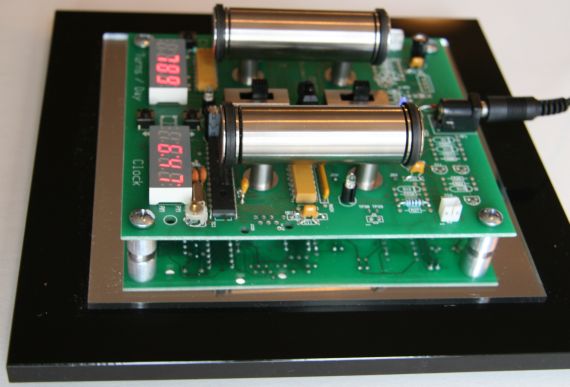
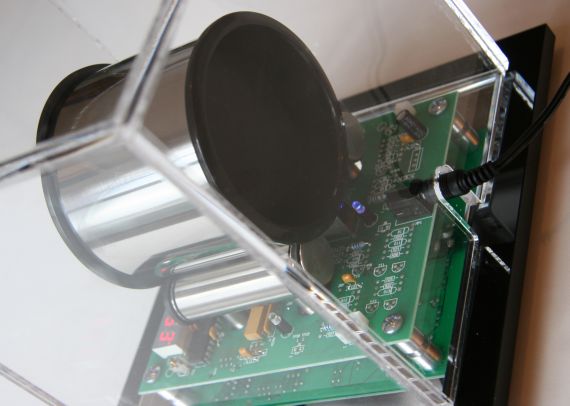
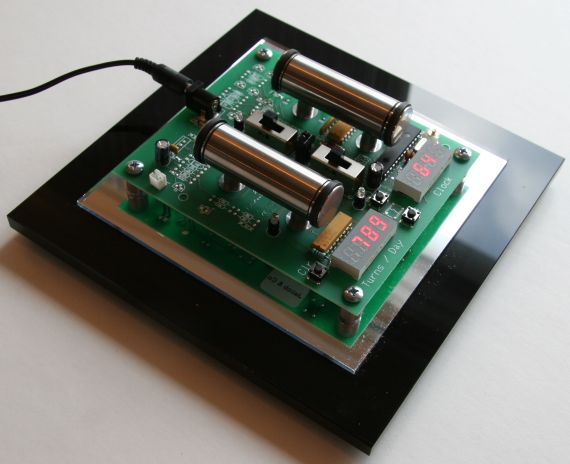
Different automatic watches each have different winding requirements. Some need more or less winding, and most watches wind with the rotor moving either clockwise or counter-clockwise. A few watches have rotors that wind in both directions. You can go to Orbita’s website for a “Watch Database” that has an impressive list of watches and is updated frequently. You can go there to determine what type of winding your watch needs. Most of the time you can tell for yourself what direction the rotor of your watch winds in, but only if you have an exhibition caseback. Turn the watch in both directions. The direction where the rotor seems to move with a bit more resistance is the direction it needs to spin to wind. There is a lever switch on the Futura that controls the direction of winding. There is also a switch to control the amount of turns per day (TPD). The daily turns are indicated in the left hand LCD display, and starts counting at midnight. It then resets itself. This display is also used for various setting when you need to make adjustments to the unit. The right LCD display is for the time. This is good for a few reasons. Mostly to assist with the TPD counter as well as provide you with a reference to determine how accurate your watch is and to adjust the time if needed. I think that more watch winders should have built in clocks. I like this. Having the unit in my display case gives me a handy clock to go to when I need to adjust watches. The clock can further be set to 12 or 24 hour time.
Mounting your watch is easy to do. Simply take the cylinder off the rollers and press out the foam brick. Close your watch around the brick, place it back inside of the cylinder and then put it back on the rollers – that easy. The system also works to alleviate fears of breaking a motor by adding or removing a watch while the system is on. It does not matter at all whether or not the cylinder is on the device as it will not hurt the motor inside of the roller. That is really it in terms of using the Future watch winder. It is just that simple. There is of course the cubic hood that helps complete the look and keeps out dust. Yea, you’ll have to lift it off the unit. The acrylic hood fits relatively well on the unit – it does not have a real specific spot, but seems to fit on well.
The construction of the unit involves a shiny black case sitting on four legs. A mirror on top of which a raised circuit board is mounted, and the rest you can easily visually deduce. The Futura is very artistic in my mind. I wouldn’t actually call it futuristic at all, but I suppose it is in comparison to some of the classic looking wood winder units. Instead it is a more “tech friendly” device, proud of its electronics. Thematically similar to a skeletonized watch, only here you have electronics and lights, as opposed to gears and springs. There are actually four blue LED lights on the board that are more or less decorative. they actually have various settings and can blink and different speeds. The point of the lights it to make the unit look more “spacey,” and in that it succeeds. You’ll feel like you are in a space ship with the Futura winder being on in a dark room. You can easily turn the lights off too. I had to do this as I keep my watches in my bedroom and the bright blue blinking lights made me feel like there was a police car in the room. Turning the lights off involved removing the power to the unit and restarting it to put it in settings mode. Not a big deal, but it did involve resetting the time. Still, I was very pleased that Orbita realized that it would be a feature people would want to have some control over – something I wishes the makers of my computer thought of as it seems to twirp and blink with various lights more often than R2-D2.
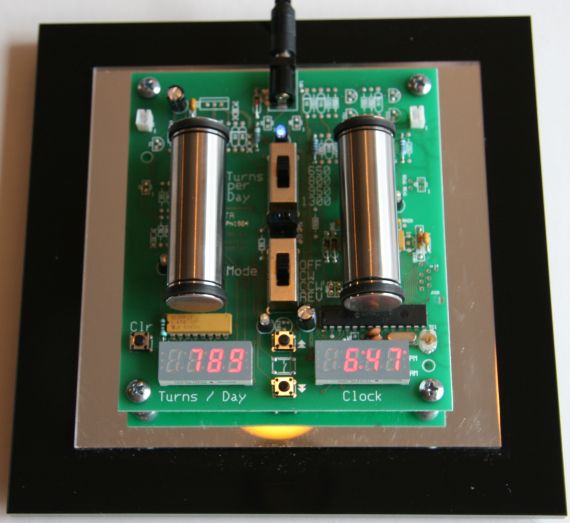
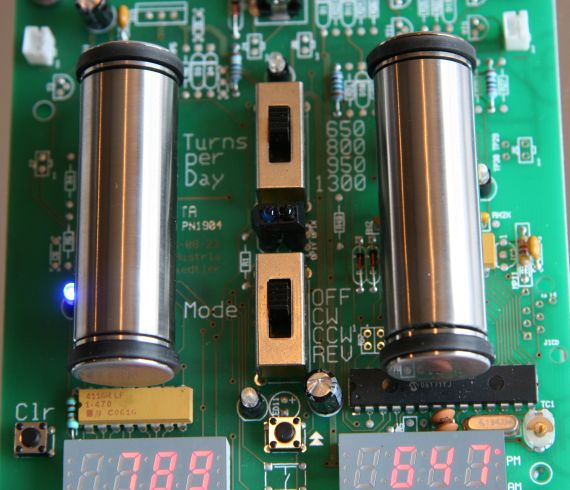
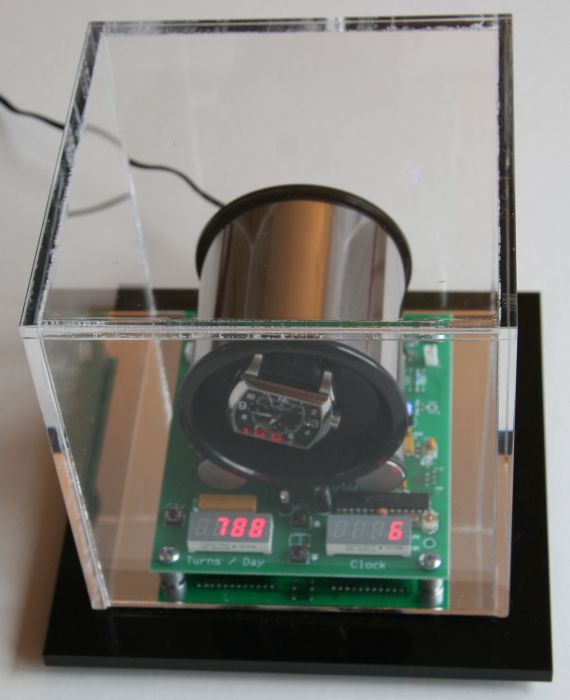
The circuit board sitting on a mirror is pretty cool looking and adds an additional level of interest to the Futura. You can’t see too much of the bottom via the mirror, but enough. The mirror and shiny black base attract fingerprints, so you’ll want to use your watch polishing cloth on it once in a while – and you probably have that cloth laying around nearby anyway. The Futura is really a showpiece winder helping to make the right watch look cooler and enhance the aesthetic value of a watch winder. It is contemporary looking and I think most men will agree that they certainly want one. Although this unit only has room for one watch, there is a three watch version of the base Futura 1 called the Futura 3 that goes for $1995. Both the Futura 1 and 3 use batteries for power, this Futura and the Tourbillon 1 use an AC adapter and plug into the wall. I happen to like this, and you can see where the plug attaches to the winder in the rear of the unit.
Now, I mentioned earlier that this Futura winder is hard to find, if at all. The reason has to do with why this winder even exists. It was originally made as a partnership between Orbita and watch maker Jacob & Co. US based Jacob & Co. wanted to provide a watch winder with its new automatic movement -based watch (they aren’t all quartz), and this Futura watch winder was the result. My understanding is that the winders were limited in production (not sure if they are still made at this time) and were made to be provided with the Jacob & Co. watches. If you are interested in getting a unit like this, I imagine the price would be somewhere between the Futura 1 and the Tourbillon 1. You’d have to contact Orbita to see if they have any available.
Overall I really like this Orbita Futura watch winder. I seriously enjoy the looks of it, and it has a special meaning to me because I used to tinker with electronics a lot as a kid. Thus I can really connect with the design and enjoy seeing the “naked” look of how the watch winder is put together. Plus, being a person that feels comfortable working with computer mother boards, I don’t mind going right on the board to look for information and adjust switches. This type of winder is for that specific type of person who enjoys tinkering and taking things apart, as well as understanding how things work. This unit more than most really looks like something that Orbita engineers had fun putting together and probably enjoy themselves.
See the Orbita Futura 1 watch winder here.
See the Orbita Tourbillon 1 watch winder here.

